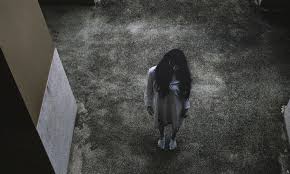Elizabeth Bathory: The Bloody Countess of Hungary
Here is a woman so notorious she not only spawned her own ghost story, but in tandem with Vlad the Impaler, provided inspiration for Dracula and Vampires as we know it. This16th century noblewoman has one of--if not the--highest body count of female killers to date, with her number of victims cited as 650 during her trial, though the true number is unknown.
Supposedly her reign of torture began when she was wed at the age of 15 and moved to Čachtice Castle to live with her lower-born husband. Apparently, her new husband, himself called the "Black Knight" for his viciousness, supported her dark inclinations, and outfitted torture chambers for her. There where she would lure in young peasant girls perform acts of cruelty such as removing their fingernails and piercing their lips with nails until they died. After her husband's death in 1604, her reign of terror only worsened, and she was rumored to have begun bathing in and drinking the blood of her victims because she reportedly believed it would make her young. Supposedly during this raid, she was caught red-handed in the very act of torture and murder. Her sentence? House-arrest. To be confined within a tower of the castle, where she would die four years later.
Her properties now are said to be haunted. Ungarisches Haus, where she and her husband stayed in Vienna, and she supposedly started her crimes, is said to be haunted, as well as Čachtice Castle, where most of them occurred. In Čachtice Castle it's said that she walks the halls just as she would have done, only she is missing her face. Likewise, her victims often make appearances as crying girls who also wander the grounds.
However, whether or not Elizabeth Bathory was really the extraordinary villain she was painted to be is up for debate. During this time in Hungary, nobles were known for harsh punishment against servants, it's true, so there may have been abuse that went on between the so-called Bloody Countess and her servant girls, but it's also possible that many of her more severe crimes were sensationalized and used against her to seize her power. Some Hungarian historians suggest that Bathory wasn't targeted due to her supposed crimes, but due to her massive power and wealth. Some suggest the King seized upon her because he had owed a sizable debt to her husband, and then after his death, her. Some even suppose that because she was a powerful women with a lot of property, and held this power on her own as a woman, she was intimidating to the King and the Court, and as a result they set out to encourage and collect sensationalized stories of her crimes. Which begs the question, if Elizabeth Bathory is wandering the halls of Čachtice Castle in the afterlife, is she doing so as an ever-bloodthirsty matriarch, or as one of its victims?



Comments
Post a Comment